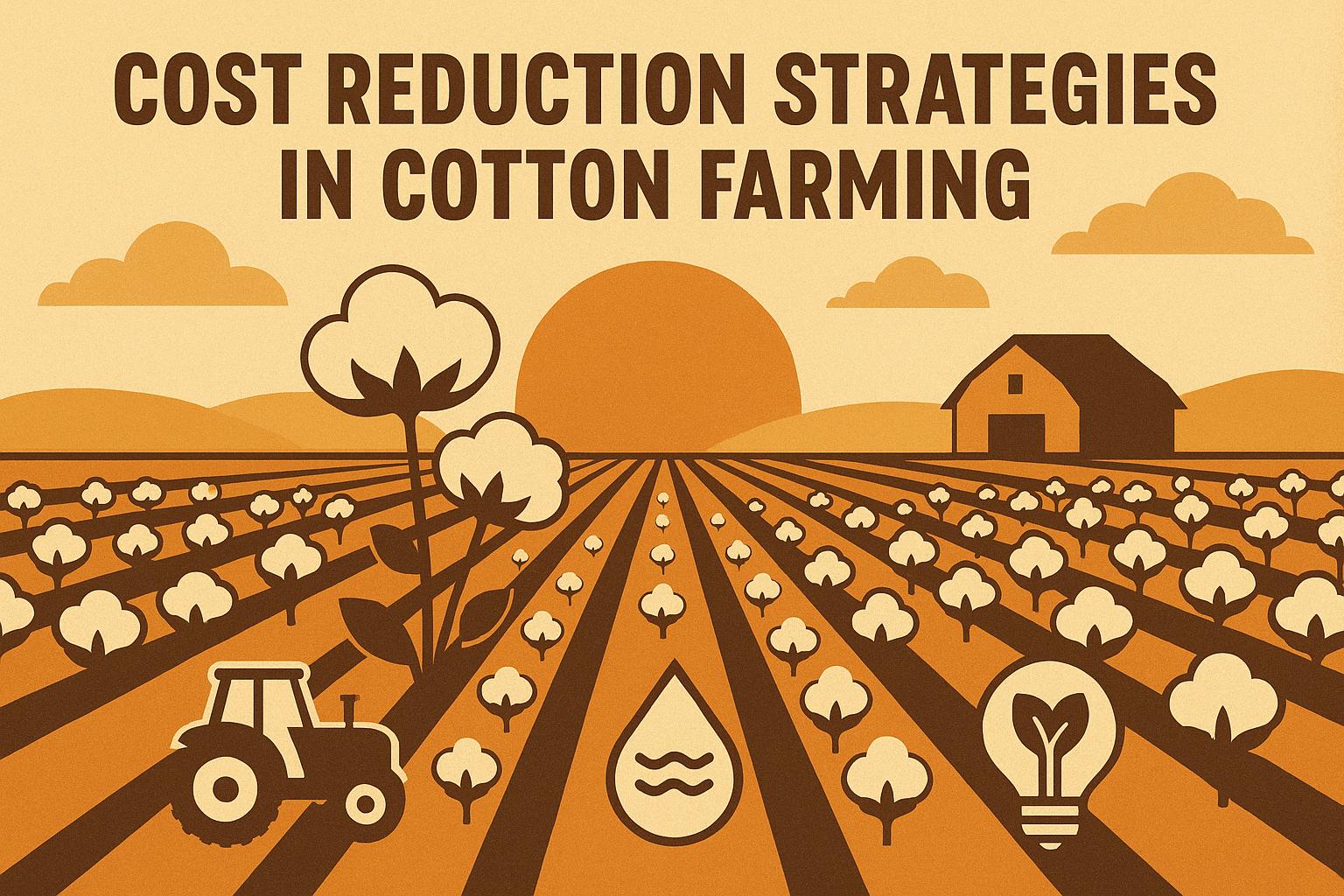Executive summary (TL;DR)
- Combat cotton boll rot management with early scouting and rotations—cuts incidence 20-30% by breaking fungal cycles in humid fields for healthier yields.
- Use fungicides like azoxystrobin at bloom if thresholds hit 5%; boosts boll retention 10-15% without excess apps in high-risk zones.
- Integrate drainage and variety resistance; reduces rot loss 15-25%, turning potential wipeouts into profitable harvests with minimal inputs.
Related Post: For related disease tactics, check out our post on Cotton Root Rot Management: Prevention, Diagnosis, and Control Tactics.
You have battled enough boll rot in cotton fields over the years to know it's not just a spotty issue—it's a thief that can slash your bale count if you don't stay ahead. You spot those water-soaked lesions turning black, and suddenly, good bolls are dropping, quality tanking. For farmers with a decade of reading the crop's signs, cotton boll rot management means proactive steps that protect your investment without blanket sprays or big overhauls.
We're tackling the strategies here, assuming you've got your basics like scouting and rotations solid. This is about the targeted approaches that work, backed by extension data from Texas A&M, Mississippi State, and Cotton Incorporated. I'll pull from those trials, share adjustments that have paid off on humid ground, and give you the playbook to adapt for your operation. No panic mode, just the management that keeps rot in check and yields up.
Understanding Boll Rot: The Culprit and Its Costs
Boll rot, mainly from fungi like Diplodia or Fusarium, thrives in wet, warm conditions—lesions start green, turn black, and mummify bolls. Incidence hits 10-30% in humid years, dropping yields 15-25%, per NC State studies. Secondary bacteria worsen, staining lint for discounts 2-5 cents/lb.
Why it spreads: Poor air flow, excess N pushing rank growth, wounds from pests. Environmental toll: Rot forces more sprays, but smart management cuts chemical use 20%.
For your farm: Early ID saves—scout lower canopy weekly from bloom; thresholds 5% infected trigger action.
Pro tip: Log weather—>0.2 inch rain post-bloom signals high risk; prep accordingly.
Cultural Practices: Prevention Through Crop Care
Chemicals treat, but culture prevents—start with basics amplified.
Strategies:
- Rotations: Break with corn or sorghum 2 years—drops soil inoculum 30-40%, Oklahoma State data.
- Spacing/airflow: 36-38 inch rows, thin canopy, cutting humidity 15%; no-till preserves structure.
- Residue management: Shred/bury infected debris post-harvest; reduces overwintering by 25%.
Georgia extension: Cultural alone holds rot under 10% in moderate years, saving $20-30/acre sprays.
Variety tie: Resistant lines like PhytoGen cut incidence 10-20%; stack with practices.
Off-topic: Market edge—rot-free lint fetches better basis; use health data for forward premiums 3-5 cents.
Fungicide Applications: Targeted Protection
Fungicides shield when culture falls short—azoxystrobin or tebuconazole at bloom if risk is high.
Techniques:
- Timing: First app at first bloom if wet forecast; follow 14 days if it persists.
- Rate: 6-8 oz/acre aerial for coverage; ground for precision.
- Rotation: Alternate MOAs (Group 11/3) to avoid resistance—efficacy holds 85%, per Florida trials.
Mississippi State: Apps at threshold boost retention 10-15%, adding 100 lbs/acre.
Pro tip: Adjuvants for stick; test water-sensitive paper for even coat.
Drainage and Water Management: Drying Out the Threat
Water logs invite rot—improve flow to cut.
Actions:
- Tile drains: Install in low spots; reduces standing water 50%, USDA NRCS.
- Deficit irrigate: Mild dry stress toughens; saves 20% water, Arizona data.
- Raised beds: Elevate 4-6 inches; drains faster, cutting rot by 20%.
California extension: Better drainage alone drops incidence 15-25% in irrigated.
Monitor: Soil probes at 6 inches; keep <70% saturation bloom to maturity.
Pest Integration: Closing Entry Points
Pests wound bolls for rot entry—bollworm holes invite 20% more infection, per Cotton Council.
IPM link:
- Bt varieties: Reduce damage by 90%; less entry for fungi.
- Scout thresholds: 5% scarred bolls trigger insecticides + fungicides.
- Beneficials: Lacewings control aphids/suckers that weaken.
Texas AgriLife: Integrated pest/rot management holds loss under 10%, upping quality.
Variety Selection: Built-In Resistance
No full immune, but tolerant varieties like Deltapine or Stoneville cut rot 10-15%, Georgia trials.
Choose: Medium maturity for escape; smooth boll for less hang-on trash.
Stack with: Cultural for synergy—resistant + rotation = 30% reduction.
For your region: Southeast humid—disease pack; Southwest dry—drought traits minimize stress rot.
Tech Tools: Monitoring for Timely Intervention
Drones spot wet zones early—NDVI low signals stress/rot risk, Kansas State, 85% accuracy.
Apps log weather/scouts; AI predicts outbreaks based on humidity.
Economics: Management's Payoff
Rot costs $50-100/acre loss; management saves with an ROI 2:1 on fungicides/culture, USDA.
Premium clean lint adds 2-5 cents/lb; invest savings in certs for more.
A Southeast op layered strategies, yielding 15% more—pays big.
Common Pitfalls: Late Apps, Poor Coverage
Late fungicide? Rot sets. Uneven spray? Patches persist.
Fix: Calibrate, time with forecasts.
Cool/wet years amp risk; prep rotations early.
Actionable Takeaways
- Rotate 2 years non-host; cut inoculum 30-40%.
- Scout weekly bloom; threshold 5% for apps.
- Fungicide azoxystrobin 6 oz bloom if wet.
- Drain low spots; beds elevate 4-6 inches.
H2 Introduction
Content
H2 Section
Content
H3 Section
Content


